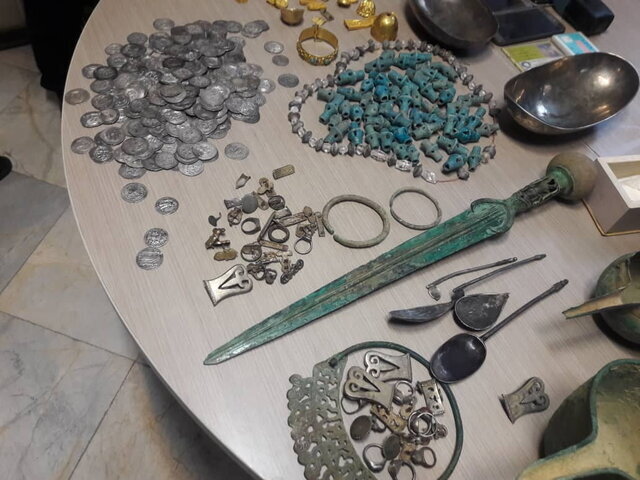Parthian-era relics recovered from a second-hand shop in Tehran

TEHRAN – Tens of ancient relics, estimated to date from the Parthian era (247 BC – 224 CE), have recently been recovered from a second-hand shop in downtown Tehran.
The police were informed by sources last week that someone illegally keeps dozens of antique items in his shop and wants to sell them. After investigations the police found the report was correct, ISNA reported on Sunday.
The person was arrested in his shop by the police in coordination with the judicial authorities, the report said.
Amongst the seized objects were 26 cracked bowls and plates, nine ceramic bowls and plates, two clay idols, eight earthen sculptures, five clay vessels, five bronze plates, and a silver bust.
However, their total value is still being assessed by a team of cultural heritage experts.
Establishing a primary residence at Ctesiphon, on the Tigris River in southern Mesopotamia, Parthian kings ruled for nearly half a millennium and influenced politics from Asia Minor to northern India, until they were overthrown by Sasanian armies from southwest Iran in the early third century CE.
Parthian wealth obtained through lucrative trade networks resulted in substantial patronage of the arts, in particular, relief sculpture, statuary (large and small scale), architectural sculpture, metalwork, jewelry, and ceramics; coins with images of Parthian rulers form another important category of objects.
AFM/MG
